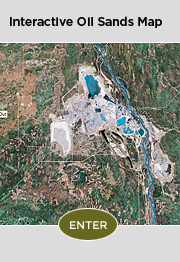World Water Reality Check
The Oil Sands Developers Group has just returned from a few days in the beautiful city of Montreal…the leaves were beginning to turn, the sun was warm and the food was delicious but most importantly, this trip was an opportunity for the OSDG to tell the oil sands story to people who wouldn’t normally hear it.
From September 19th through 24th, the OSDG hosted a booth at the International Water Association’s (IWA) World Water Congress – our purpose in going was to talk about what was happening in terms of industry use of water in the oil sands but the IWA provided a great opportunity to connect with other industrial organizations researching, innovating and utilizing the latest technologies to reduce water costs and protect the environment.
As you can imagine, there was a lot of interest in OSDG’s booth – many water experts from around the world had never had a chance to be up close and personal with the oil sands. Many of these experts had only read negative news stories on our industry.
The most common misconception on the issue is that the oil sands industry is the primary user of water in Alberta. In fact, agriculture uses a far greater percentage of our water. In 2007, agriculture in Alberta was allocated 4.1 billion cubic metres of water. Current allocations for the oil sands are in the range of 7 cubic metres per second (about 221 million cubic metres total), which is about 5 per cent of agricultural allocations. Even if all existing, approved and announced oil sands projects proceed, the oil sands industry would only use 2 per cent of the Athabasca river flow – today, the industry uses less than 1 per cent of the river’s flow to produce the equivalent of 70 per cent of Canada’s crude oil requirements.
To put it simply, the water used for oil sands production pales in comparison to the water used for a great many products that we need to sustain our lifestyles including food, clothing and many manufactured goods such as paper. People are surprised to hear it but our industry has been successful at raising the bar with water-reducing technology. Examples include on-site recycling of water, the use of brackish and saline water, and minimal industry water consumption. These technologies are all becoming the norm in the oil sands. And as an industry we are constantly striving to become more efficient.
While here in Alberta we are lucky to have all these natural resources and the ability to protect them, we’re not perfect yet. The reality is that our companies are showing continuous improvement on many environmental issues, including water.
PS…We also had a chance to speak to Editorial Boards at two of Montreal’s biggest newspapers – the Gazette and Le Devoir. For those of you who read French, please take a look at the balanced article that resulted from the conversation.




















